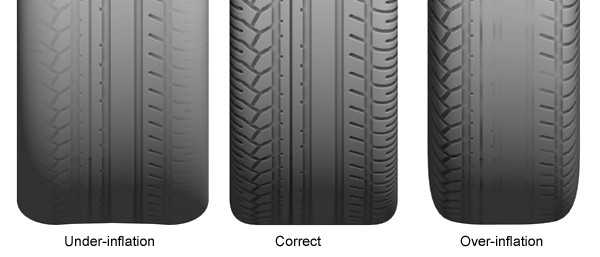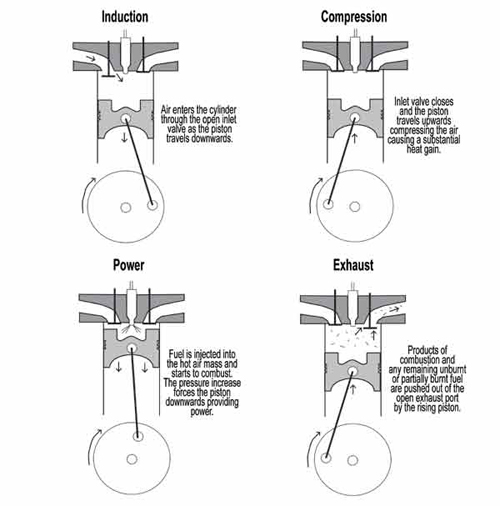1) Lack of Lube oil
Oil not only lubricates the turbocharger's spinning shaft and bearings, it also carries away heat. When oil folw stops or is reduced, heat is immediately transferred from the hot turbine wheel to the bearings, which are also heating up because of the increased friction due to the lack of oil. This combination causes the turbocharger shaft temperature to increase rapidly.
if oil flow down not increase and the process continues, bearings will fail. Once the bearings fail (which can happen in just seconds) seals, shft, turbine and compressore sheels can also be damaged.
The principle causes of turbocharger bearing lubrication problems are low oil pressure , a bent, plugged or undersized oil lube supply line, plugged or restricted oil galleries in the turbocharger, or improper machine start-up and shutdown procedure.
Oil lelvels and pressure should always be closedly monitored and all worn hoses and lines should be replaced. The turbocharger oil supply line should be checked frequently to make sure it is not kinked or bent and it should always be replaced with a line of equal size, length and strength.
The easiest way to damage a turbocharger is through improper start-up and shutdown procedures. Always idle the engine for at least 30 seconds (no load) after start-up and before shutdown. Warming the engine up before applying a load allows oil pressure to build up and lines to fill with oil.
Idling the engine before shutdown allows the engine and turbocharger to cool. "Hot" shutdowns can cause the turbocharger to fail because after high-speed operation the turbocharger will continue to rotate lone after the engine has been shut off and oil pressure has dropped to zero. This will cause heat to build up and possible hearing damage. It can also cause carbon and varnish deposits to form.
2) Oil Contamination
A second cause of turbocharger failures is contaminated oil. it can be caused by a worn or damaged oil filter or not changing the lube oil at recommended intervals. Expecting the oil filter to remove dirt, sand, metal chips, etc. from the oil before they reach the engine or turbocharger can be a costly mistake because contaninated oil may completely bypass the engine oil filter if the oil filter or oil cooler is clogged, if the filter element is improperly installed, or if the oil is thick during cold weather.
- Four good ways of avoiding oil contamination are:
- Always inspect the engine thoroughly during major overhaul. Look especially for any sludge or debris left in lube oil galleries.
- Change lube oil at recommended intervals. Analysis of oil samples at filter chane periods can help identify potentially harmful contaminants in the oil.
- Clean the area around the oil fill cap before adding oil.
3) Ingetion of Foreign Objects
The third cause of turbocharger damage is the ingestion of foreign objects. Foreign objects or particaes can be ingested and cause damage to the turbocharger on both compressor and turbine sides. This easy to avoid.
On the compressore side, foreign objects usually take the form of dust, sand, or shreds of air cleaner element that enter through improperly installed air cleaner elements. Leak air inlet piping (loose clamps or torn rubber joints) or torn pleats in dry-type air cleaner elements also create problems.
The result is erosion of compressor blades that can cause the delicately balance wheel to wobble.
4) Restriced oil Drainage
A fourth cause of turbocharger damage is restricted lube oil drainage. Thelubricating oil carries away heat generated by friction fo the bearings and from the hot exhaust gases. If drainage back to the sump is impeded, the bearings will overheat with damage that will ultimately lead to failure.
There ar two primary reasons for restricted drainage. A blocked drain tube, due to either damage or a buildup of sludged oil or high crankcase pressure which can be due to restriced crankcase breather or excessive engine blowby.
Periodically check both the turbocharger oil drain tube and engine breather tube for damge or restriction. Correction of these conditions leads to longer turbocharger life.
5) Abnormally High Exhaust Temperatures
A fifth cause of turbocharger damge is abnormally high exhaust temperatures. Elevated exhaust temperatures cause coking of oil which can lead to bearing failure. Extreme over-temperature operation can case wheel burst.
There are two basic cause of over-temperature. The first is restricted air flow and the second is overpowering the engine. In either case the einge has more fuel than available air for proper combustion, this overfueled condition leads to elevated exhaust temperatures.
Causes of restricted air flow can include damaged inlet piping, clogged air filters, excessive exhaust restriction, or operation at extreme altitudes. Overpowering generally is due to improper fuel delivery or injection timing. If overtemperature operation has been identified, an instpection of the air inlet and exhaust systems should be perfomed. Also, check the fuel delivery and timing.












